Whenever we injure ourselves, we tend to think the pain exists in the wounded area, but in truth, the pain is all in our brain. Brain circuits mold our perception of pain by filtering the incoming information via our sensory nerves. These are the nerves that send signals to the brain when we have stubbed our toe, broken a bone, or pulled a muscle. Read on to discover more about how pain really works in our brains and bodies.
For a consultation with a pain management doctor in Orange County, visit CRPM today to get started on your path towards pain-free living.
Pain Tolerance
You might be familiar with the fact that some people are great with dealing with pain while others, not so much. This is because we are all equipped with varying levels of pain tolerance. Our brains decide whether to “turn up” or “turn down” the volume on sensory pain signals that are sent whenever we are injured. Some brains choose to turn the volume down and pay less attention to the pain while others turn the volume up and hone in on it.
Miraculous Pain-Free Moments
Have you ever heard stories about soldiers and other people doing incredible things after being shot, maimed, or gravely injured? Soldiers who report being hit by shrapnel one second and rescuing others, then later recall that they didn’t notice they had been injured at the time. They might even report never feeling any pain at all. In some cases, this happens because the brain does not know how to process the injuries we incur. In others, the heat of the moment, often fueled by adrenaline, helps spare us from the pain until later. We may not feel the pain when it occurs, but later feel a great deal of pain after the fact.
Pain Processing Systems
There are 2 types of pain processing systems within the body. The first is determines where the pain’s location, severity, and characteristics before sending the information coming from our nerve endings to our brain. The second handles the emotional aspect of pain which sends the signal to our brain that ouch! That hurts!
Contrastingly, position emotions such as calm and connection with others helps to minimize pain we feel. Negative emotions tend to exacerbate the pain and make it much worse. In fact, torturers have utilized this for centuries by coupling pain infliction with humiliation and other mental warfare.
Insights on Pain
One mystery scientists are still grappling with is how the brain regulates its perception of pain, but studies have given them a few insights and clues. Low frequency brain waves which respond to physical sensations increase when the brain focuses on the sensation, thereby increasing the sensation (of pain or otherwise).
Participants’ brain waves were monitored in a study wherein researchers tapped lightly on each person’s finger or toe at Brown University. Researchers instructed patients to focus only on their foot or only on their hand and found that the area of the brain which ignores distractions also had brain wave rhythm increases. This leads researchers to find that the area in the brain which executes control and the sensory area became synchronized. The study offers some answers as to why some people can train their brains to filter out chronic pain via meditation. To speak with a pain management doctor, gain better understanding, and find relief from pain, contact the experts at CRPM today for a consultation.
Pain Management Doctor in Orange County
The Centers of Rehabilitation and Pain Medicine of Orange County utilize a unique approach to helping patients manage and overcome their health concerns. Integrating their vast medical knowledge with extensive patient education and the latest technological innovations in healthcare, CRPM works tirelessly to help patients recover quickly and gain peace of mind.


